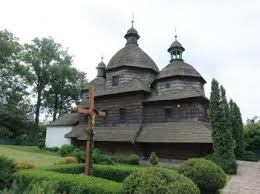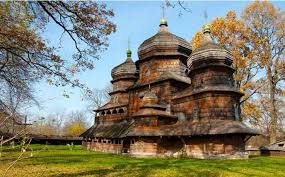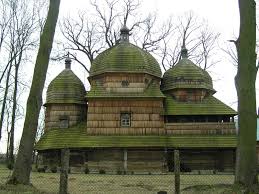Showing posts with label Poland and Ukraine - Wooden Tserkvas of the Carpathian Region. Show all posts
Showing posts with label Poland and Ukraine - Wooden Tserkvas of the Carpathian Region. Show all posts
Thursday, 17 February 2022
POLAND
This cover from Poland depicts 2 stamps with 2 UNESCOP World Heritage Sites: the Historic Centre of Warsaw (since 1980) and the Wooden Tserkvas of the Carpathian Region in Poland and Ukraine, a group of wooden Orthodox (and some Eastern Catholic) churches located in Poland and Ukraine which were inscribed in 2013 on the UNESCO World Heritage List.
Thursday, 20 January 2022
UKRAINE
This cover from Ukraine depicts 2 stamps of each type (issued in 2015) featuring theDrohobych-Tserkva of Saint George in Ukraine and the Kwiatón-Tserkva of Saint Paraskeva in Poland. The Wooden Tserkvas of the Carpathian Region in Poland and Ukraine are a group of wooden Orthodox (and some Eastern Catholic) churches located in Poland and Ukraine which were inscribed in 2013 on the UNESCO World Heritage List which explains:
built of horizontal wooden logs between the 16th and 19th centuries by communities of Orthodox and Greek Catholic faiths. The tserkvas bear testimony to a distinct building tradition rooted in Orthodox ecclesiastic design interwoven with elements of local tradition, and symbolic references to their communities’ cosmogony. — World Heritage Centre.
Monday, 10 December 2018
POLAND
A nice UNESCO cover from Poland, depicting a a joint issue with Ukraine (from year 2015) on topic "Wooden Churches of the Carpathian region".
Situated in the eastern fringe of Central Europe, the transnational property numbers a selection of sixteen tserkvas (churches). They were built of horizontal wooden logs between the 16th and 19th centuries by communities of Orthodox and Greek Catholic faiths.


Situated in the eastern fringe of Central Europe, the transnational property numbers a selection of sixteen tserkvas (churches). They were built of horizontal wooden logs between the 16th and 19th centuries by communities of Orthodox and Greek Catholic faiths.
Monday, 22 January 2018
UKRAINE
Another UNESCO cover from Ukraine, depicting a a joint issue with Poland (from year 2015) on topic "Wooden Churches of the Carpathian region".
Situated in the eastern fringe of Central Europe, the transnational property numbers a selection of sixteen tserkvas (churches). They were built of horizontal wooden logs between the 16th and 19th centuries by communities of Orthodox and Greek Catholic faiths.


Situated in the eastern fringe of Central Europe, the transnational property numbers a selection of sixteen tserkvas (churches). They were built of horizontal wooden logs between the 16th and 19th centuries by communities of Orthodox and Greek Catholic faiths.
Tuesday, 9 January 2018
UKRAINE
A nice UNESCO cover from Ukraine, depicting a a joint issue with Poland (from year 2015) on topic "Wooden Churches of the Carpathian region".
Situated in the eastern fringe of Central Europe, the transnational property numbers a selection of sixteen tserkvas (churches). They were built of horizontal wooden logs between the 16th and 19th centuries by communities of Orthodox and Greek Catholic faiths.


Situated in the eastern fringe of Central Europe, the transnational property numbers a selection of sixteen tserkvas (churches). They were built of horizontal wooden logs between the 16th and 19th centuries by communities of Orthodox and Greek Catholic faiths.
Thursday, 4 January 2018
UKRAINE
A nice UNESCO cover from Ukraine, depicting 2 stamps of a joint issue with Poland (from year 2015) on topic "Wooden Churches of the Carpathian region".
Situated in the eastern fringe of Central Europe, the transnational property numbers a selection of sixteen tserkvas (churches). They were built of horizontal wooden logs between the 16th and 19th centuries by communities of Orthodox and Greek Catholic faiths.


Situated in the eastern fringe of Central Europe, the transnational property numbers a selection of sixteen tserkvas (churches). They were built of horizontal wooden logs between the 16th and 19th centuries by communities of Orthodox and Greek Catholic faiths.
Subscribe to:
Posts (Atom)





